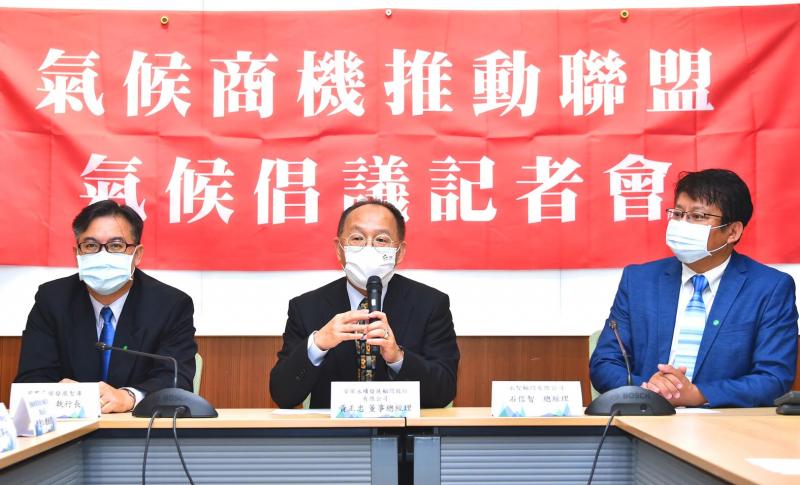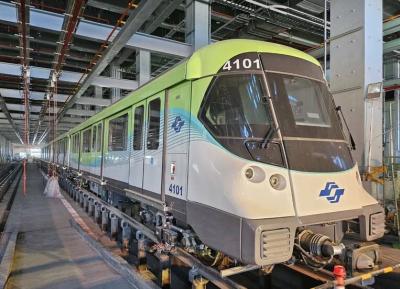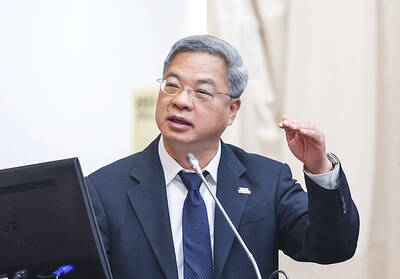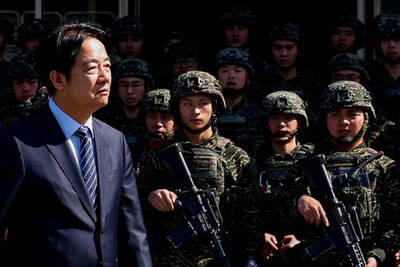A group of advocates yesterday announced the formation of an alliance in Taipei called Business Action on Climate Change (BACC), aimed at facilitating a more integrated effort to fight climate change among the private sector, the government and the public.
The alliance was cofounded by Niven Huang (黃正忠), managing director of KPMG Sustainability Consulting and regional leader of KPMG Sustainability Services in the Asia-Pacific; Robert Shih (石信智), general manager of YC Consultants; and Camyale Chao (趙恭岳), executive director of the International Climate Development Institute.
At a news conference to launch the alliance, Huang said that while the global “economic lockdown” brought upon by the COVID-19 pandemic has contributed to efforts to save energy and reduce carbon emissions, wildfires last year and this year have still resulted in record-breaking concentrations of atmospheric carbon dioxide worldwide.

Photo: Tu Chien-jung, Taipei Times
To conserve energy and reduce carbon emissions, all main sectors of the economy must transition at the same time, he said.
As the construction, manufacturing, transport and agriculture sectors move toward a more circular and environmentally friendly future, the alliance aims to help them gain the support of the government, the market and the public, Huang said.
Although the pandemic has had a clear impact on economies worldwide, it has not slowed the climate-related plans of governments, Chao said.
Climate-related issues are not just about environmental protection, as was often viewed in the past, but are also related to development, he said.
In light of global climate advocacy, supply chains across the world are expected to reorganize, he said.
It is important for Taiwan to plan ahead for changes in climate policies, seize potential opportunities for “green” business, build a better policy environment and connect with the world, Chao said.
While in the past reducing carbon emissions was viewed by businesses as a cost, the alliance hopes to promote the idea of carbon reduction as a business opportunity, Shih said.
Even trying its hardest, Taiwan would only be able to reduce global carbon emissions by less than 1 percent, he said.
However, it could use its technology to help the world lower emissions, Shih said.
Lin Tze-luen (林子倫), deputy executive of the Executive Yuan’s Office of Energy and Carbon Reduction; Democratic Progressive Party legislators Hung Sun-han (洪申翰), Su Chiao-hui (蘇巧慧), Lai Pin-yu (賴品妤) and Mark Ho (何志偉); and Taiwan Statebuilding Party Legislator Chen Po-wei (陳柏惟) also attended the news conference.
There are now many new ways to deal with environmental issues that can give rise to new business opportunities, Su said.
When people have an incentive to invest more resources in tackling environmental issues, it ensures that environmental sustainability is something people are eager — instead of forced — to achieve, she said.

The Taipei Mass Rapid Transit (MRT) Wanda-Zhonghe Line is 81.7 percent complete, with public opening targeted for the end of 2027, New Taipei City Mayor Hou You-yi (侯友宜) said today. Surrounding roads are to be open to the public by the end of next year, Hou said during an inspection of construction progress. The 9.5km line, featuring nine underground stations and one depot, is expected to connect Chiang Kai-shek Memorial Hall Station to Chukuang Station in New Taipei City’s Jhonghe District (中和). All 18 tunnels for the line are complete, while the main structures of the stations and depot are mostly finished, he

The first global hotel Keys Selection by the Michelin Guide includes four hotels in Taiwan, Michelin announced yesterday. All four received the “Michelin One Key,” indicating guests are to experience a “very special stay” at any of the locations as the establishments are “a true gem with personality. Service always goes the extra mile, and the hotel provides much more than others in its price range.” Of the four hotels, three are located in Taipei and one in Taichung. In Taipei, the One Key accolades were awarded to the Capella Taipei, Kimpton Da An Taipei and Mandarin Oriental Taipei. Capella Taipei was described by

Minister of Economic Affairs Kung Ming-hsin (龔明鑫) yesterday said that private-sector refiners are willing to stop buying Russian naphtha should the EU ask them to, after a group of non-governmental organizations, including the Centre for Research on Energy and Clean Air (CREA), criticized the nation’s continued business with the country. While Taiwan joined the US and its Western allies in putting broad sanctions on Russia after it invaded Ukraine in 2022, it did not explicitly ban imports of naphtha, a major hard-currency earner for Russia. While state-owned firms stopped importing Russian oil in 2023, there is no restriction on private companies to

President William Lai (賴清德) is expected to announce a new advanced “all-domain” air defense system to better defend against China when he gives his keynote national day speech today, four sources familiar with the matter said. Taiwan is ramping up defense spending and modernizing its armed forces, but faces a China that has a far larger military and is adding its own advanced new weapons such as stealth fighter jets, aircraft carriers and a huge array of missiles. Lai is expected to announce the air defense system dubbed “Taiwan Dome” in his speech this morning, one of the sources said. The system